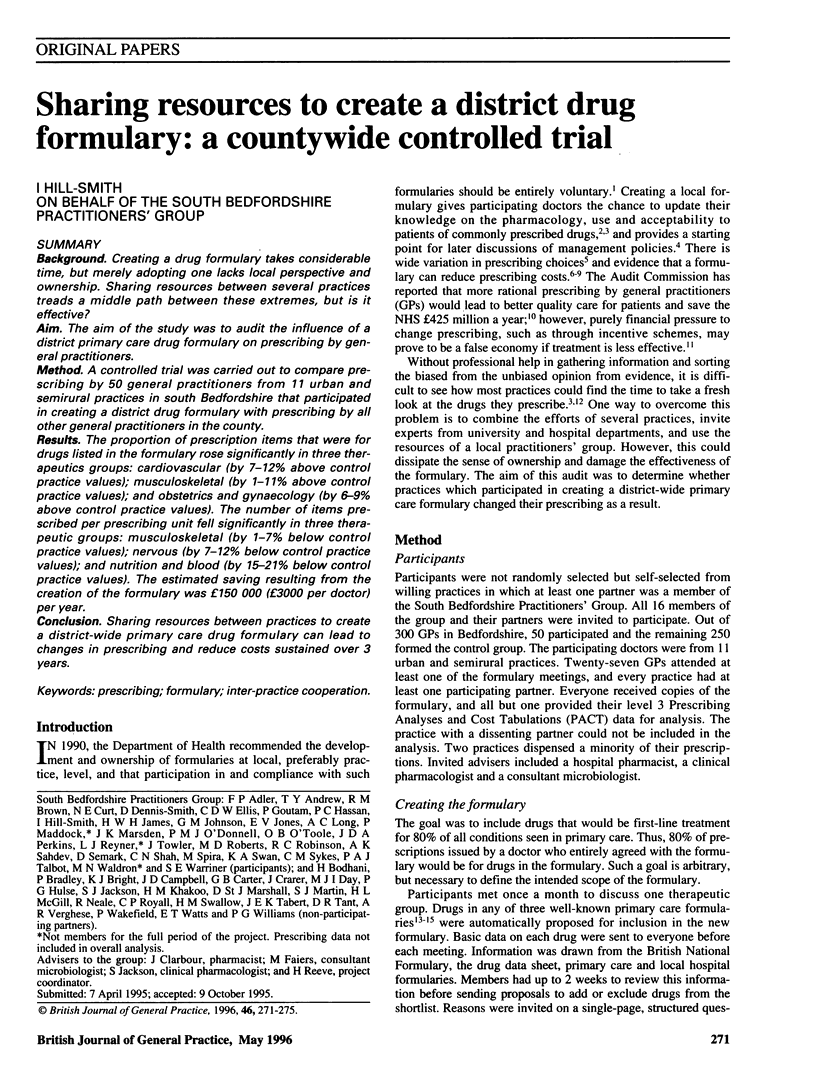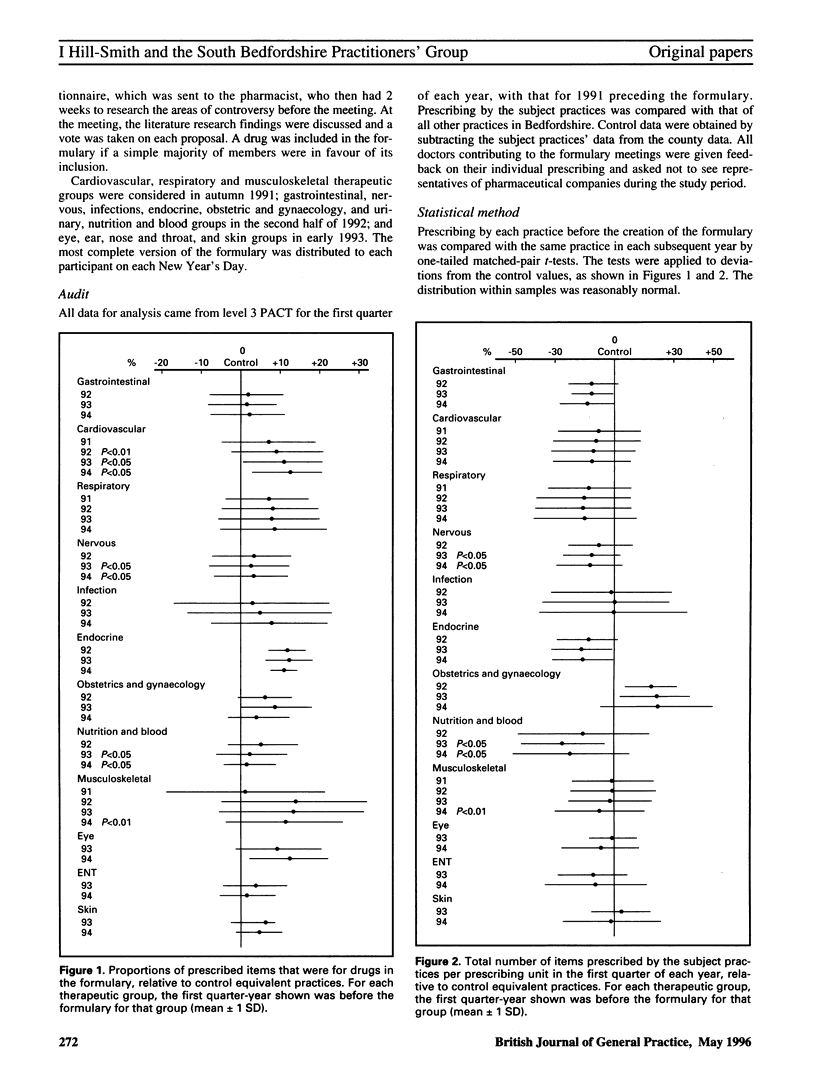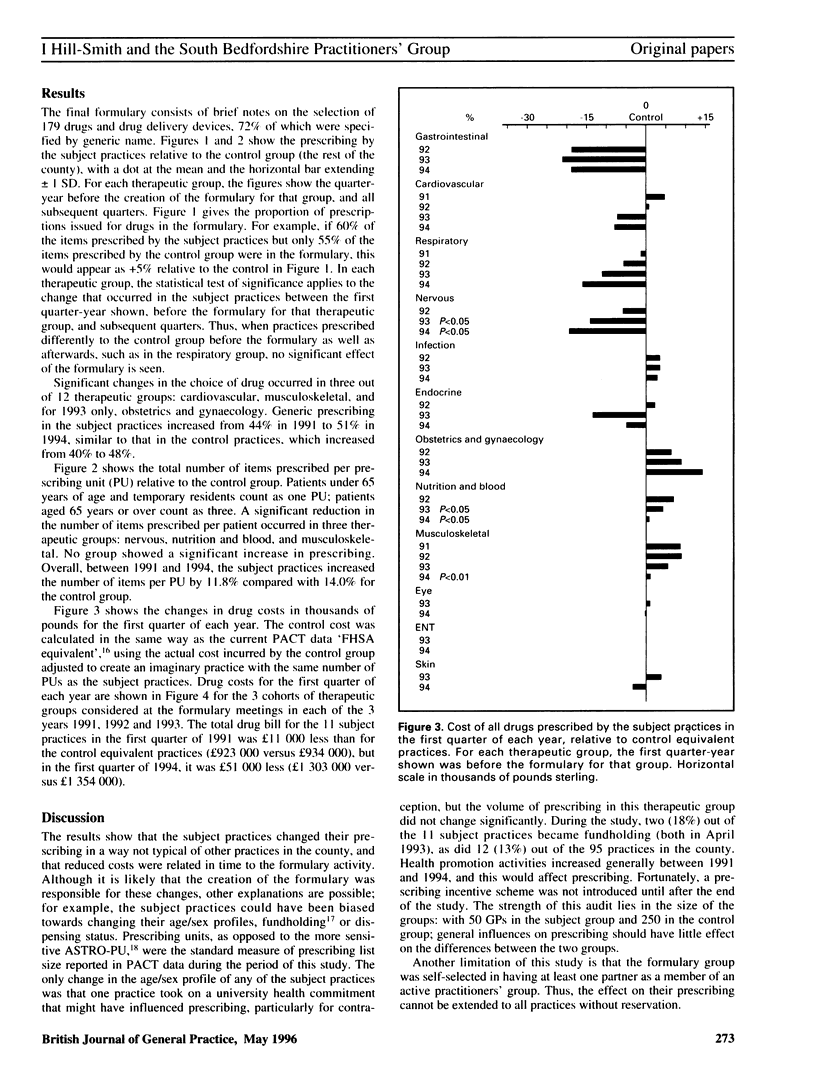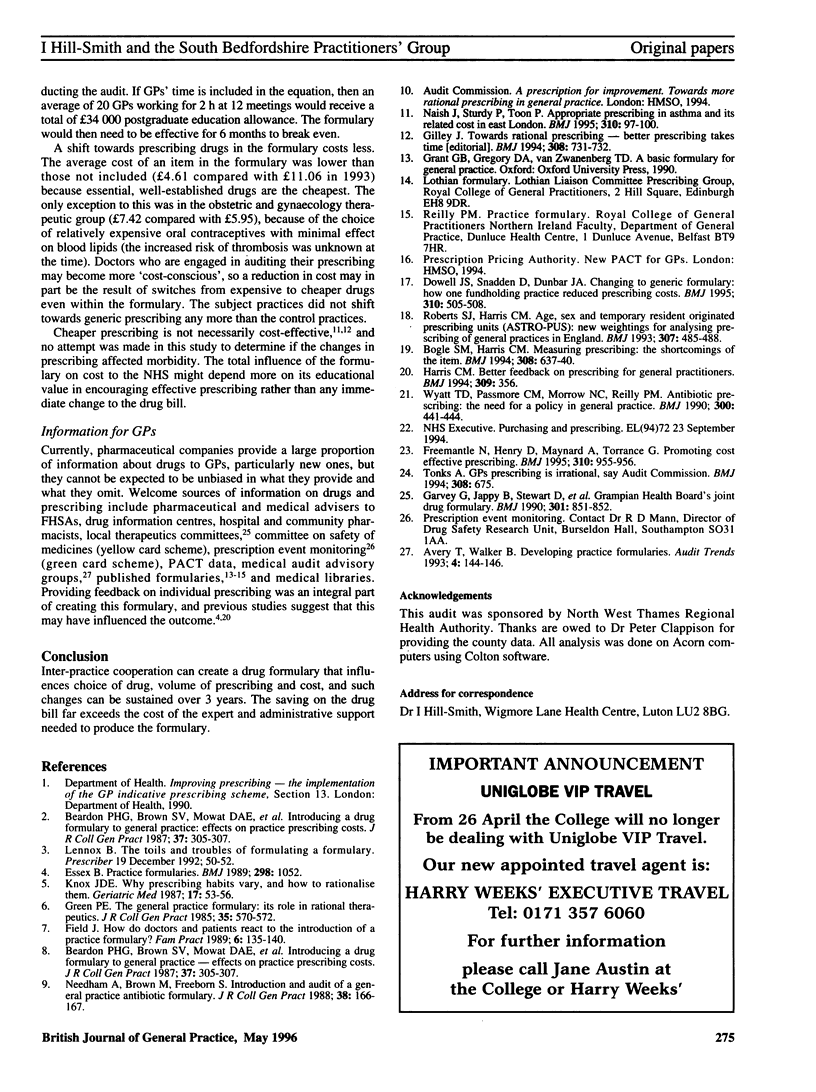Abstract
BACKGROUND: Creating a drug formulary takes considerable time, but merely adopting one lacks local perspective and ownership. Sharing resources between several practices treads a middle path between these extremes, but is it effective? AIM: The aim of the study was to audit the influence of a district primary care drug formulary on prescribing by general practitioners. METHOD: A controlled trial was carried out to compare prescribing by 50 general practitioners from 11 urban and semirural practices in south Bedfordshire that participated in creating a district drug formulary with prescribing by all other general practitioners in the county. RESULTS: The proportion of prescription items that were for drugs listed in the formulary rose significantly in three therapeutics groups: cardiovascular (by 7-12% above control practice values); musculoskeletal (by 1-11% above control practice values); and obstetrics and gynaecology (by 6-9% above control practice values). The number of items prescribed per prescribing unit fell significantly in three therapeutic groups: musculoskeletal (by 1-7% below control practice values); nervous (by 7-12% below control practice values); and nutrition and blood (by 15-21% below control practice values). The estimated saving resulting from the creation of the formulary was 150,000 pounds (3000 pounds per doctor) per year. CONCLUSIONS: Sharing resources between practices to create a district-wide primary care drug formulary can lead to changes in prescribing and reduce costs sustained over 3 years.
Full text
PDF




Selected References
These references are in PubMed. This may not be the complete list of references from this article.
- Beardon P. H., Brown S. V., Mowat D. A., Grant J. A., McDevitt D. G. Introducing a drug formulary to general practice--effects on practice prescribing costs. J R Coll Gen Pract. 1987 Jul;37(300):305–307. [PMC free article] [PubMed] [Google Scholar]
- Beardon P. H., Brown S. V., Mowat D. A., Grant J. A., McDevitt D. G. Introducing a drug formulary to general practice--effects on practice prescribing costs. J R Coll Gen Pract. 1987 Jul;37(300):305–307. [PMC free article] [PubMed] [Google Scholar]
- Bogle S. M., Harris C. M. Measuring prescribing: the shortcomings of the item. BMJ. 1994 Mar 5;308(6929):637–640. doi: 10.1136/bmj.308.6929.637. [DOI] [PMC free article] [PubMed] [Google Scholar]
- Dowell J. S., Snadden D., Dunbar J. A. Changing to generic formulary: how one fundholding practice reduced prescribing costs. BMJ. 1995 Feb 25;310(6978):505–508. doi: 10.1136/bmj.310.6978.505. [DOI] [PMC free article] [PubMed] [Google Scholar]
- Essex B. Practice formularies. BMJ. 1989 Apr 22;298(6680):1052–1052. doi: 10.1136/bmj.298.6680.1052. [DOI] [PMC free article] [PubMed] [Google Scholar]
- Field J. How do doctors and patients react to the introduction of a practice formulary? Fam Pract. 1989 Jun;6(2):135–140. doi: 10.1093/fampra/6.2.135. [DOI] [PubMed] [Google Scholar]
- Freemantle N., Henry D., Maynard A., Torrance G. Promoting cost effective prescribing. BMJ. 1995 Apr 15;310(6985):955–956. doi: 10.1136/bmj.310.6985.955. [DOI] [PMC free article] [PubMed] [Google Scholar]
- Garvey G., Jappy B., Stewart D., Williams A., Duffus P. R., Maitland J. M., Valentine M. J., Wedderburn S., Webster J., Petrie J. C. Grampian Health Board's joint drug formulary. BMJ. 1990 Oct 13;301(6756):851–852. doi: 10.1136/bmj.301.6756.851. [DOI] [PMC free article] [PubMed] [Google Scholar]
- Gilley J. Towards rational prescribing. BMJ. 1994 Mar 19;308(6931):731–732. doi: 10.1136/bmj.308.6931.731. [DOI] [PMC free article] [PubMed] [Google Scholar]
- Green P. E. The general practice formulary--its role in rational therapeutics. J R Coll Gen Pract. 1985 Dec;35(281):570–572. [PMC free article] [PubMed] [Google Scholar]
- Harris C. M. Better feedback on prescribing for general practitioners. BMJ. 1994 Aug 6;309(6951):356–356. doi: 10.1136/bmj.309.6951.356. [DOI] [PMC free article] [PubMed] [Google Scholar]
- Naish J., Sturdy P., Toon P. Appropriate prescribing in asthma and its related cost in east London. BMJ. 1995 Jan 14;310(6972):97–100. doi: 10.1136/bmj.310.6972.97. [DOI] [PMC free article] [PubMed] [Google Scholar]
- Needham A., Brown M., Freeborn S. Introduction and audit of a general practice antibiotic formulary. J R Coll Gen Pract. 1988 Apr;38(309):166–167. [PMC free article] [PubMed] [Google Scholar]
- Roberts S. J., Harris C. M. Age, sex, and temporary resident originated prescribing units (ASTRO-PUs): new weightings for analysing prescribing of general practices in England. BMJ. 1993 Aug 21;307(6902):485–488. doi: 10.1136/bmj.307.6902.485. [DOI] [PMC free article] [PubMed] [Google Scholar]
- Wyatt T. D., Passmore C. M., Morrow N. C., Reilly P. M. Antibiotic prescribing: the need for a policy in general practice. BMJ. 1990 Feb 17;300(6722):441–444. doi: 10.1136/bmj.300.6722.441. [DOI] [PMC free article] [PubMed] [Google Scholar]


